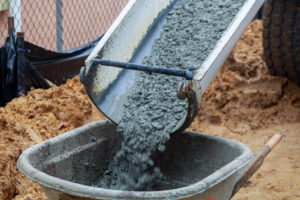Table of Contents
ToggleTuckpointing mortar selection – The key to long-lasting results
Have you ever wondered why some homes seem like they’ll stand the test of time, while others crumble like yesterday’s news? If you’re a homeowner, the thought has likely crossed your mind. The secret lies in an often-overlooked aspect of masonry work – tuckpointing.
If your home is showing signs of wear and tear, with cracks and crumbling mortar, it’s time you might want to consider residential tuckpointing . But it’s not that simple. To ensure your tuckpointing project is successful, it’s essential to choose the right mortar.
In this guide, we’ll dive deep into the art of choosing the right mortar for tuckpointing. Let’s dive in!
6 Crucial Tips to Ensure Right Mortar Selection for Tuckpointing
Understanding Mortar Basics
- Let’s kick things off with the basics. Mortar is the unsung hero holding your bricks together, like the glue in a masterpiece. But not all mortars are created equal. Some are robust, others more delicate. It’s vital to understand these differences.
Mortar consists of three main ingredients: cement, sand, and water. The ratio of these components affects its strength and durability. For tuckpointing, a mortar mix with a higher cement content is usually preferable. It provides the necessary strength to support your bricks.
Assessing Your Brickwork
- Before you rush into selecting mortar, take a close look at your brickwork . Are you dealing with historic bricks or modern ones? The type of bricks you have influences your mortar choice significantly.
Historic bricks may be softer and more porous, while modern bricks tend to be denser. This distinction determines how much moisture the mortar must withstand and how well it should bond with the bricks. Neglecting this step can lead to a mismatched mortar choice, potentially causing more harm than good.
Mortar Color and Aesthetics
- While strength is vital, aesthetics also matter. After all, you don’t want your tuckpointing job to stick out like a sore thumb. The color of your mortar should complement your bricks, enhancing your home’s curb appeal.
Select a mortar color that blends seamlessly with your bricks, creating a visually pleasing facade. Don’t underestimate the power of aesthetics in boosting your home’s overall appearance.
DIY vs. Professional Tuckpointing
- Are you considering a DIY tuckpointing project to save a few bucks? It’s a tempting idea, but it comes with its own set of challenges.
While DIY tuckpointing is feasible for some, it’s not a one-size-fits-all solution. Make sure you know the pros and cons of both DIY and professional tuckpointing to make an informed decision based on your skill level, time, and resources.
Budgeting Wisely
- Tuckpointing is an investment in your home’s future. To ensure you get the best value without cutting corners, it’s crucial to budget effectively.
This involves not only estimating the cost of materials and labor but also factoring in potential long-term savings through proper tuckpointing.
Weather Matters
 Mother Nature can be unforgiving, especially to your home’s exterior. Rain, snow, and sunlight take their toll on your bricks and mortar. However, the right mortar can shield your bricks from these elements.
Mother Nature can be unforgiving, especially to your home’s exterior. Rain, snow, and sunlight take their toll on your bricks and mortar. However, the right mortar can shield your bricks from these elements.
In areas with harsh weather conditions , it’s essential to choose a mortar mix designed to withstand them. This ensures your tuckpointing work remains intact, even in the face of nature’s challenges.
Mortar selection is the cornerstone of your home’s durability when it comes to residential tuckpointing. The right mortar can transform your bricks into a fortress, standing strong against time and the elements.
So, don’t leave your home’s future to chance; choose your mortar wisely, and let these six tips be your guiding light. And if you find yourself requiring professional assistance, feel free to give us a call at (202) 796-7644 or fill out this form to arrange a consultation with our experts!




